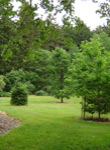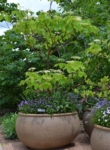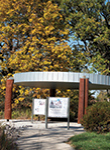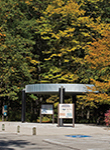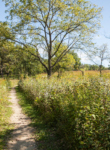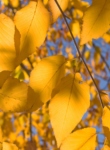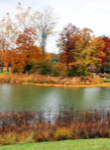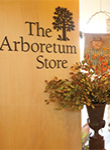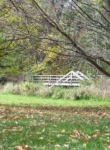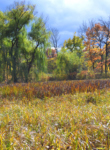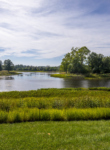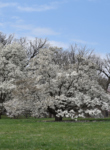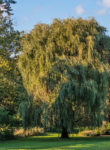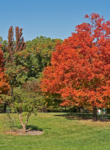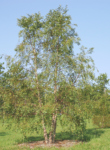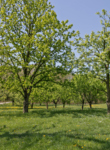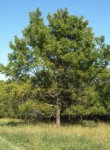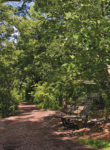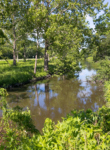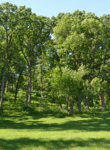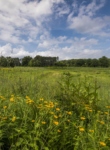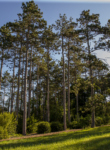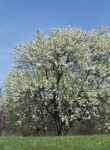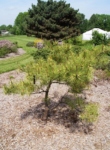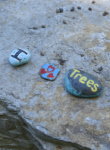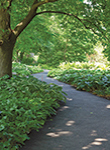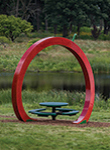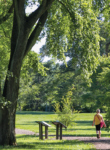Poison sumac is a native plant, but it is also a dangerous plant. It is dangerous to handle. When contact is made with the plant, it can cause an intense skin reaction with symptoms including redness, swelling, itching, burning, blisters, and rashes. This plant spreads by seed, as well as through new shoots underground, known as rhizomes. It commonly grows in wet habitats such as riparian zones, bogs, and swamps. It is found throughout the eastern United States.
As an alternative, common elderberry (Sambucus canadensis) is a good option. There are a number of native and non-native species that could be used in place of poison sumac. More desirable species may be found using the online Search Trees and Plants page of the Arboretum website. Before purchasing or planting, be sure to check for any local or state guidelines on this species, and ensure that this plant is suitable for its habitat by checking its attributes at mortonarb.org or plants.usda.gov.
More Information
Size and Method of Spreading
Poison sumac is a shrub or small tree that can reach 20 feet tall and 4 to 6 feet wide.
Bark Color and Texture
Poison sumac has stout branches that are light gray and dotted with pores, known as lenticels. Mature bark is pale gray and marked by narrow, elongated lenticels. Stems have leaf scars that are large and shield-shaped, with prominent bundle scars dotting the edges.
Leaf Description
The alternate, compound leaves of poison sumac have closely arranged leaflets opposite each other on the center stalk (pinnate). They typically range from 7 to 13 leaflets. The whole leaf is about one foot in length. Poison sumac’s leaflets are bright green, oval-shaped (ovate), and have a sharp point at the end of the leaf (apiculate tip). Leaflet margins are smooth (entire). The center stalk that holds the leaflets is bright red. In fall, the leaves will turn orange-red.
Flower Description
Poison sumac has light green to white flowers borne in the leaf axils in branched clusters (panicle). Each small flower is about ¼ inch in size, and has five petals. Male and female flowers are produced on separate plants (dioecious). Flowering occurs from late spring into early summer.
Fruit Description
The round fruit of poison sumac houses a singular seed (drupe) and ranges from white to green. It has a smooth surface and is less than ½ inch in size. The fruits hang down in pendulous clusters and they often persist into winter.
General Management
For more information on management of this plant, contact The Morton Arboretum Plant Clinic (630-719-2424 or plantclinic@mortonarb.org).







